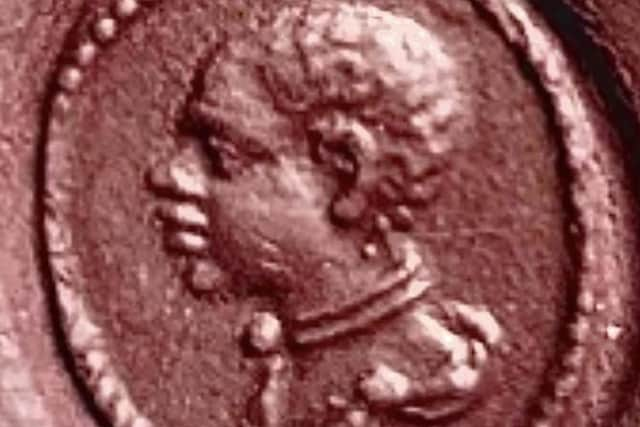Morecambe metal detectorist's rare find could have links to Lancaster's slave trade past
and live on Freeview channel 276
The silver seal matrix discovered by Matthew Hepworth earlier this month is now on display at the Slavery Family Trees exhibition in Lancaster City Museum.
The seal, thought to date back to the 17th or 18th Centuries, features a portrait of an enslaved man, and is of such high quality that it was probably made by an expert engraver and may have belonged to a slave trader who used it to seal documents.
Advertisement
Hide AdAdvertisement
Hide AdOnly a couple of other known examples exist so it is a very special find for Matthew, a charge nurse, who has been metal detecting for 30 years.


“I am so proud to have discovered this find,” said Matthew. “It’s probably one of my best finds due to its historical and local importance.”
Matthew, a member of Lune Valley Detecting Club, discovered the seal within just 10 minutes of detecting on farmland north of Lancaster which he has searched for three decades.
“It was missed on previous occasions and I am so humbled by this discovery as I’ve never found anything before related to the slave trade,” he said.
Advertisement
Hide AdAdvertisement
Hide Ad

Matthew reported his discovery to the local finds liaison officer as it is potential ‘treasure’ being more than 300-years-old and 10% precious metal, and the seal is now on loan to Lancaster City Museum.
The find came at a fortuitous time as the museum is currently hosting an exhibition about the city’s links to the slave trade which runs until February 2023.
“I think it is right to be in the museum as it’s important for Lancaster,” said Matthew.
*From 1736 to 1806, Lancaster was the fourth largest port in England for transatlantic slavery. The Slavery Family Trees exhibition draws on research by Lancaster Black History Group who’ve been working with local schools, university students, voluntary organisations, community and faith groups since 2021.
*2022 has been particularly successful for Matthew’s metal detecting as earlier this year, he discovered a silver Short Cross Penny from the reign of Henry III and an Iron Age broach.
